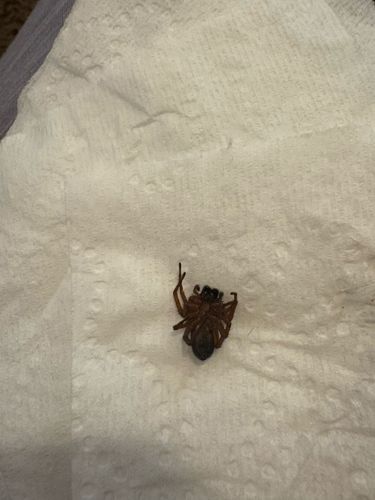Trapdoor spider
Scientific Name: Multiple genera and species within the noted families, e.g., Cteniza, Mygale, Nemesia.
Order & Family: Araneae (Spiders), Mygalomorphae (Infraorder), Ctenizidae / Migidae / Nemesiidae (Families - identification to specific family without closer examination is difficult from this image).
Size: Body length typically ranges from 1 to 3 cm (0.4 to 1.2 inches), but some species can be larger.

Natural Habitat
Found in various terrestrial habitats including forests, grasslands, and deserts, often in burrows lined with silk and topped with a camouflaged "trapdoor."
Diet & Feeding
Mainly insects and other small invertebrates. They ambushing prey that walks near their camouflaged burrows.
Behavior Patterns
Typically docile and reclusive, often found under rocks, logs, or in burrows. They are nocturnal hunters and prefer to avoid human contact. Males may wander more in search of mates.
Risks & Benefits
Potential Risks: Their bite can be painful, but is generally not considered dangerous to humans, unless an individual has an allergic reaction. Potential Benefits: They help control insect populations.
Identified on: 8/24/2025